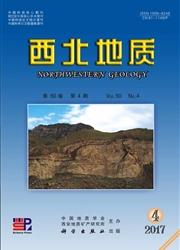

 中文摘要:
中文摘要:
金川矿床为世界第三大在采铜镍硫化物矿床,该矿床赋矿岩体出露面积仅为1.34km^2,主要由超镁铁质岩石组成,岩体矿化率高达47%。不同岩相和矿石类型之间呈明显的突变接触关系。这些典型特征暗示成矿物质在侵入现存空间之前发生了明显的预富集。成矿物质的深部预富集过程主要探讨深部岩浆房内硫化物的熔离机制、硫化物熔离的相对时限及熔离量的大小、硫化物熔离后的迁移聚集及分离结晶过程。金川岩体不同岩石类型中橄榄石Fo变化范围小(Fo=80.11-85.68)。暗示深部岩浆房是开放的岩浆系统,存在多期次后续新鲜岩浆的贯入。依据橄榄石-液相平衡原理,计算得到金川岩体母岩浆MgO含量为10.8%~12.6%,为高Mg拉斑玄武质岩浆,表明岩浆源区发生了较高程度的部分熔融,其为硫化物的大量熔离提供了丰富的成矿元素。金川岩体Sr-Nd-Os同位素和微量元素地球化学特征表明,金川岩体原生岩浆遭受明显的地壳物质混染,混染程度约为5%~10%,Th-Ta、Th-Nb和(Th/Ta)pM-(La/Nb)PM图解表明,部分混染物为下地壳组分,下地壳物质的混染可能是导致深部岩浆房内硫化物熔离的主要机制。金川矿床赋矿岩石类型主要为二辉橄榄岩和纯橄岩,为金川岩体中基性程度最高的岩石类型,同时“Melts”模拟计算也表明,硫化物的熔离发生在岩浆演化的早期阶段,并随着后续新鲜岩浆的持续贯人熔离出的硫化物含量不断增加。熔离后的硫化物在重力作用下下沉至岩浆房底部或中下部,形成矿浆和富矿岩浆。金川矿床中块状矿石相对富集IPGE,富Cu矿体中则相对富集Cu和PPGE。这种成矿元素的分异现象表明,随着温度的降低。硫化物在深部岩浆房内发生了明显的分离结晶作用。同时研究表明,硫化物分离结晶程度与硫化物之间的连通性呈正
 英文摘要:
英文摘要:
The Jinchuan Ni-Cu deposit is one of the three largest magmatic sulfide deposits in the world. Jinchuan deposit have some unusual typical geological characteristics, such as the small size of the host intrusion, mainly consist of ultramafic rocks, high sulfide/silicate ration. , different rocks and ores showed the mutation contact relationship. These typical characteristics implied the the metal had precon- centrated in the deep stage magma chamber. The preconcentration process mainly involved three aspects: The mechanism of sulfide segregation; The relative time of sulfide segregation and the amount of sulfide segregated from the magma; The migration and fractional crystallization process of the sulfide. The Fo of olivine in different rocks have a narrow range (Fo=80. 11-85.68), which suggest that the deep magma chamber is an open system, the penetration of fresh magma make the Fe/Mg ration of the magma con- stant. Follow the olivine-liquid equilibrium principle, the MgO content of Jinchuan intrusion parental mag- ma calculated from 10. 8%-12. 6%, which indicated that the source have a high degree of partial melt- ing. The Sr-Nd-Os isotope and trace element geochemical features implied that the jinchuan intrusion pa- rental magma suffered apparent crustal materials, the extent fo the contamination is about 5 %-10 %. The Th-Ta, Th-Nb, (Th/Ta)PM- (La/Nb)PM diagram showed that part of the contaminated material is a component of the lower crust. The lower crustal material contamination may be the major pechanism of sulfide segregation in the deep magma chamber. The main ore-bearing rock types are lherzolite and dunite, The "Melts" software simulation calculation show that the sulfide segregation occurred in the early stage of magmatic evolution. After the sulfide segregation, as the gravity, it sink to the bottom or the lower part of the chamber. The massive ores of jinchuan deposit have the relative enrichment IPGE, and the rich cop- per ore body is relatively enriched in Cu and PPGE. The diffrern
 同期刊论文项目
同期刊论文项目
 同项目期刊论文
同项目期刊论文
 Sulfide mineralization associated with arc magmatism in the Qilian Block, western China: zircon U-Pb
Sulfide mineralization associated with arc magmatism in the Qilian Block, western China: zircon U-Pb 期刊信息
期刊信息
